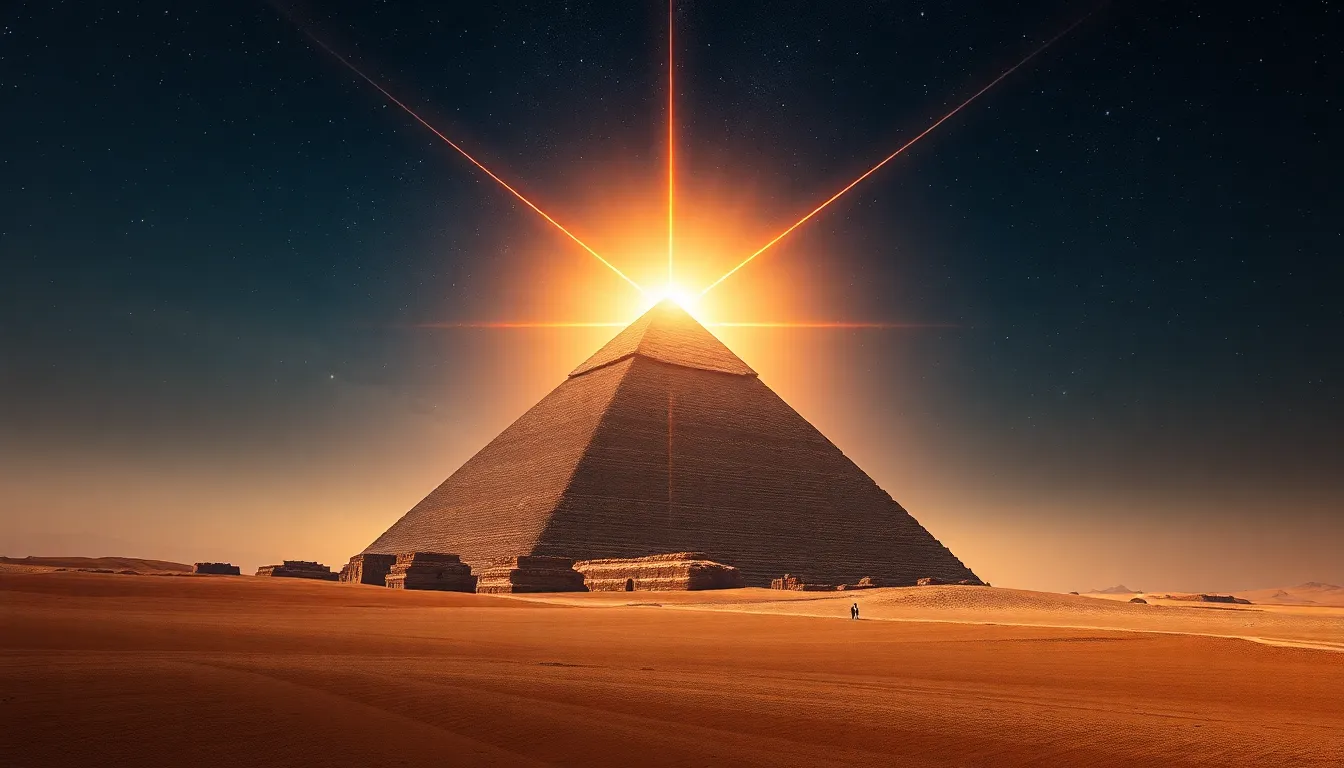The Cosmic Significance of the Great Pyramid’s Alignment
I. Introduction
The Great Pyramid of Giza, one of the Seven Wonders of the Ancient World, stands as a testament to the architectural and astronomical prowess of ancient Egypt. Built during the Fourth Dynasty around 2580–2560 BC, it remains a focal point of intrigue and study. Its precise alignment with cardinal points and celestial bodies has led researchers to explore its historical and astronomical significance, raising questions about the knowledge and beliefs of the ancient Egyptians.
This article aims to delve into the cosmic significance of the Great Pyramid’s alignment, examining its historical context, astronomical relationships, and enduring legacy. Through this exploration, we can better appreciate how ancient civilizations viewed their place in the universe.
II. Historical Context of the Great Pyramid
The Great Pyramid was commissioned by Pharaoh Khufu, also known as Cheops, and is the largest of the three pyramids on the Giza plateau. It is estimated to have taken about 20 years to complete, employing thousands of skilled laborers, architects, and craftsmen.
In ancient Egyptian society, the pyramid served not only as a tomb for the pharaoh but also as a potent symbol of his power and divine connection. It reflects the complex social hierarchy and the significance of the afterlife in their culture. The construction of such a monumental structure demonstrated the engineering skills and organizational capabilities of the Egyptians, showcasing their commitment to the afterlife.
III. Astronomical Alignments of the Great Pyramid
The Great Pyramid is famously aligned with remarkable precision to the cardinal directions—north, south, east, and west. This orientation is not merely coincidental; it holds significant astronomical implications.
- Orientation: The sides of the pyramid are aligned with incredible accuracy to the four cardinal points, with the northern side being aligned almost perfectly with true north.
- Key Events: The pyramids’ alignment allows for the observation of key astronomical events such as the solstices and equinoxes. During the summer solstice, the sun rises directly over the eastern horizon, and during the winter solstice, it sets in the west, aligning perfectly with the pyramid’s edges.
These astronomical events were of great significance to the ancient Egyptians, as they were tied to agricultural cycles and religious festivals. The sun was revered as a vital force in their cosmology, emphasizing the importance of solar worship.
IV. Theories on the Purpose of the Alignment
The alignment of the Great Pyramid has prompted various theories regarding its purpose, particularly concerning its religious and spiritual meanings.
- Religious Interpretations: Many scholars believe that the pyramid’s alignment was designed to facilitate the pharaoh’s journey to the afterlife. The pyramid was seen as a means for the king to ascend to the heavens and join the gods.
- Cosmological Role: The stars played a crucial role in ancient Egyptian cosmology. The alignment of the Great Pyramid may have been intended to connect earthly realms with celestial ones, symbolizing the pharaoh’s divine authority.
Additionally, the pyramid’s design may have been influenced by the belief in the afterlife, with the structure itself serving as a celestial gateway for the deceased pharaoh.
V. Modern Scientific Perspectives
Recent archaeological findings have shed light on the Great Pyramid’s alignment and its construction techniques. Using advanced technology such as satellite imagery and laser scanning, researchers have been able to analyze the pyramid’s orientation with unprecedented accuracy.
Studies have revealed that the ancient Egyptians possessed remarkable knowledge of astronomy and geometry, which they applied in the design of the pyramid. Comparisons with other ancient structures around the world, such as Stonehenge and Chichen Itza, highlight a shared understanding of celestial phenomena, suggesting that these civilizations may have exchanged knowledge and practices.
VI. The Great Pyramid in the Context of Global Architecture
The Great Pyramid’s architectural style and astronomical alignment resonate with other ancient structures worldwide. Notable similarities include:
- Stonehenge: This prehistoric monument in England is aligned with the sun’s movements during solstices, showcasing a similar reverence for astronomical events.
- Chichen Itza: The Mayan pyramid of Kukulkan features a staircase that casts a serpent shadow during the equinox, indicating an advanced understanding of astronomy.
The influence of the Great Pyramid’s design extends beyond Egypt, inspiring later civilizations and contributing to global architectural traditions. The exchange of ideas among ancient cultures exemplifies the interconnectedness of human knowledge.
VII. The Ongoing Mystique and Legacy of the Great Pyramid
The Great Pyramid has captivated the imaginations of people across centuries, appearing in popular culture and media as a symbol of ancient wisdom and mystery. Its astronomical significance continues to draw researchers and enthusiasts alike.
Ongoing research into the Great Pyramid’s alignment reveals new insights into ancient Egyptian astronomy and architecture, prompting modern scholars to reflect on the ingenuity of these ancient builders. As a monument to human achievement, the Great Pyramid stands as a reminder of our relentless quest for knowledge and understanding of the cosmos.
VIII. Conclusion
The cosmic significance of the Great Pyramid’s alignment underscores the profound relationship between ancient civilizations and the cosmos. By examining its historical context, astronomical alignments, and cultural implications, we can appreciate the intricate ways in which the ancient Egyptians viewed their place in the universe.
As we continue to explore the Great Pyramid and its mysteries, we are reminded of the enduring legacy it holds in understanding humanity’s quest for meaning and connection with the cosmos.




